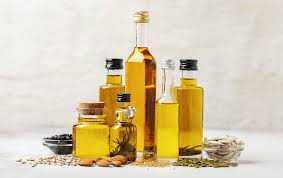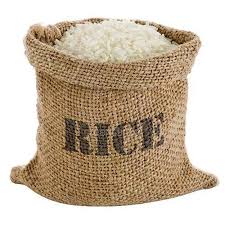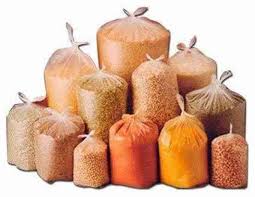Mission Statement:
Our mission is to provide high-quality dry fruits, salt, rice, and cooking oils to both wholesale and retail customers. We aim to be a trusted supplier, offering competitive pricing and exceptional service to cater to the diverse needs of households, restaurants, and retail businesses.
Objectives:
To establish a successful wholesale and retail business within the first year.
To build strong relationships with suppliers and customers.
To expand the product range and grow into a leading distributor in the region by year three.
Business Model: The business will operate both on a wholesale and retail model. It will supply bulk quantities to businesses and offer smaller, consumer-friendly packs for retail customers.
1. Market Research & Analysis
Industry Overview:

The market for dry fruits, salt, rice, and cooking oils is growing, driven by the increasing demand for healthy and essential food products.
Health-conscious consumers are driving the demand for premium dry fruits and organic cooking oils.
Rising disposable incomes are contributing to a steady growth in retail demand.
Target Market:
Wholesale: Small to medium-sized grocery stores, restaurants, hotels, and supermarkets.
Retail: Individual consumers looking for quality dry fruits, rice, salt, and cooking oils for household use.
Market Trends:
Increasing consumer demand for natural and organic products, particularly in cooking oils and dry fruits.
Growth in home cooking due to rising food delivery costs and an increased focus on health and wellness.
Online retail is a growing channel, allowing businesses to tap into a wider customer base.
2. Products and Services
This section will detail the specific products you offer, their unique selling points, and any services provided.
Core Products:

Dry Fruits: Almonds, cashews, pistachios, walnuts, raisins, apricots, and other popular varieties.
Salt: Table salt, Himalayan pink salt, rock salt, sea salt, etc.
Rice: Basmati rice, jasmine rice, brown rice, and other varieties of premium quality rice.
Cooking Oils: Vegetable oil, sunflower oil, olive oil, canola oil, and other cooking oils in various sizes.
Quality Assurance: All products are sourced from reputable suppliers and undergo rigorous quality checks.
Competitive Pricing: Wholesale prices are competitive to attract bulk buyers, while retail pricing remains affordable for end consumers.
Convenient Packaging: Products are available in a variety of sizes, from bulk packaging for wholesalers to convenient packs for individual consumers.
Customer Service: Personalized service with delivery options for both wholesale and retail customers.
3. Marketing Strategy

Branding: Create a strong brand identity that conveys trust, quality, and health. Emphasize the natural, high-quality aspects of your products.
Marketing Channels:
Retail:
In-store Promotions: Discounts, samples, and loyalty programs.
Social Media: Use platforms like Instagram, Facebook, and Twitter to showcase recipes, health tips, and special offers.
Local Advertising: Flyers, local events, and partnerships with local businesses.
Online Store: Launch an e-commerce platform for customers to order online.
Wholesale:

Direct Outreach: Develop strong relationships with local grocery stores, restaurants, and foodservice businesses.
B2B Marketing: Attend trade shows, and business networking events, and provide bulk discounts and offers.
Website: Have a dedicated wholesale section where businesses can place bulk orders directly.
Customer Acquisition:
Provide promotional discounts for first-time buyers (both retail and wholesale).
Build partnerships with local chefs, influencers, and food bloggers to promote the products.
Offer bulk purchase options and attractive pricing for wholesale clients.
4. Operational Plan Suppliers
Source products from reliable and certified suppliers for dry fruits, rice, salt, and oils.
Consider sourcing organic or locally grown products for better marketability.
Location & Facilities:
The business will operate from a physical store that will cater to both retail and wholesale customers.
A warehouse will be set up for bulk storage and distribution.
Delivery vehicles for efficient wholesale distribution.
Inventory Management:
Implement an inventory management system that tracks stock levels, orders, and deliveries to avoid overstocking or stockouts.
Regular stock audits to ensure product quality and expiration management, especially for dry fruits and oils.
Staffing:
Retail staff to handle customer service, sales, and store management.
Warehouse staff to manage storage, packing, and shipping for wholesale orders.
Administrative staff for accounting, marketing, and business development.
5. Financial Plan
Startup Costs:
Store Setup: Renovations, signage, and fixtures for the retail location.
Warehouse Setup: Rent, storage racks, and shelving for bulk inventory.
Inventory: Initial stock purchase for dry fruits, rice, salt, and oils.
Technology: POS system, website development, and inventory management software.
Marketing: Website, social media ads, and promotional materials.
Revenue Streams:
Wholesale: Bulk sales to businesses (grocery stores, hotels, restaurants).
Retail: Direct consumer sales in-store and via e-commerce platforms.